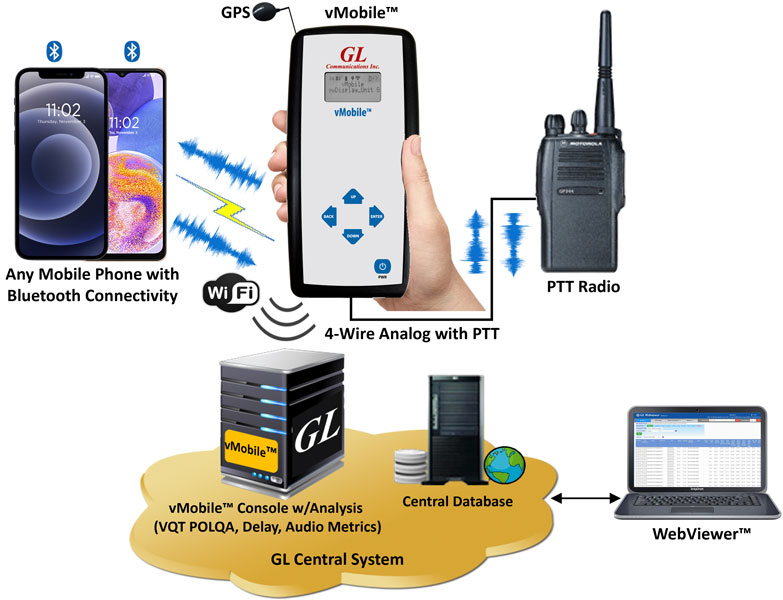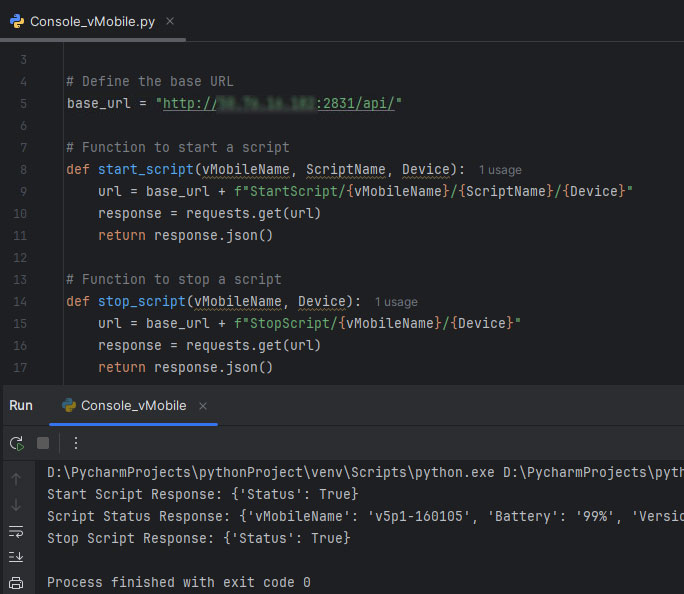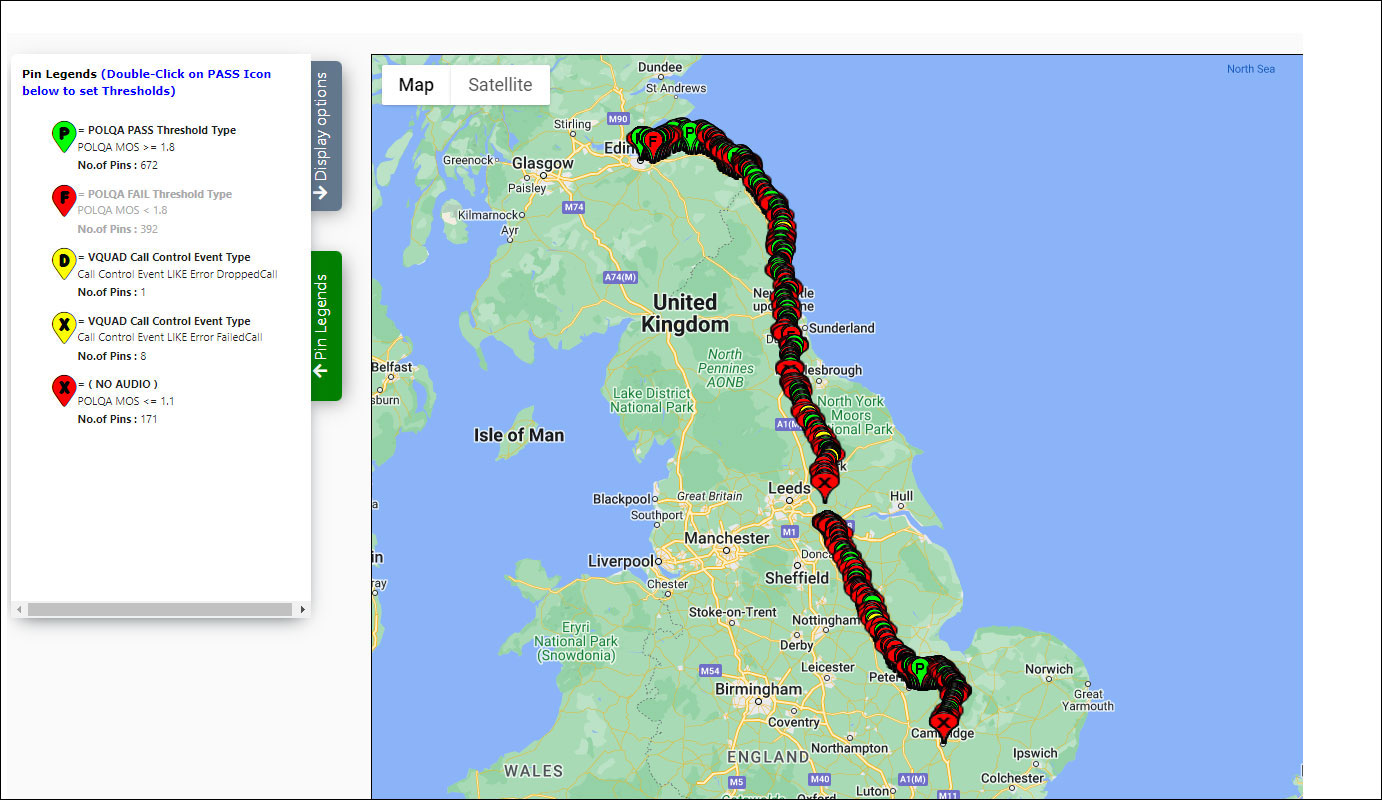GL Advances Voice and Data Quality Testing with vMobile™
Gaithersburg, Maryland, USA - October 29, 2024, GL Communications Inc., a global leader in telecom test and measurement solutions, addressed the press regarding their portable vMobile™ solution for voice and data quality testing. This solution interfaces to endpoint devices such as cellphones or Push-to-Talk Radios. It can send and receive audio through the device and measures of voice quality, delay and more.

Robert Bichefsky, Director of Engineering at GL Communications Inc., highlighted the tool's capabilities, stating, “vMobile™ is a pocket-sized portable device for voice and data quality testing on various networks including cellular (5G, 4G, LTE, 3G) and mobile radios. vMobile™ revolutionizes automated drive and walk testing, offering features such as GPS, Indoor mapping, and real-time tracking.”
The vMobile™ handheld device includes dual Bluetooth® modules for connecting to two mobile phones simultaneously, a 4-Wire Analog port with Push-to-Talk (PTT) for interfacing with mobile radios as a headset, and embedded Wi-Fi for central system communication and remote audio analysis. An onboard GPS receiver enhances location accuracy, while a third Bluetooth module enables direct communication with the Android/iOS Console app for uninterrupted control, monitoring, and configuration. All results and events are stored in a central MySQL database and accessed through the GL WebViewer™, a user-friendly web dashboard.
The vMobile™ streamlines drive and walk testing for mobile and radio networks. Automated testing is enabled through scripting, which facilitates placing and receiving calls, as well as sending and recording audio during established calls. All call events are sent to WebViewer™, displaying metrics like Call Fail and Call Dropped, and enabling custom reports with line and bar graphs, such as Voice Quality and Delay over time. Results are plotted directly on Google Maps using custom pins depicting pass/fail and errors during testing. For non-GPS areas like indoors or subways, the vMobile™ Indoor Tracking System (ITS) accurately maps results. In addition, using the WebViewer you can remotely stream and listen to the recorded audio files.
The vMobile™ offers automated voice quality testing by streamlining call setup for mobile phones and recording audio during calls. It automates PTT functionality for mobile radios, providing precise measurements like PTT Network Delay and PTT Grant Tone Delay. Recorded audio is analyzed for Voice Quality Mean Opinion Score using POLQA (ITU-P.863) or PESQ (ITU-P.862), with WebViewer™ converting PESQ results to DAQ as needed during radio testing.
Additional metrics include One-Way Delay, Round-Trip Delay, Signal and Noise levels, Audio Dropout analysis, Frequency, and Power analysis. The device tracks call metrics such as Call Failed and Call Dropped, with all results mapped via GPS coordinates in the WebViewer™.
The vMobile™ supports remote operations through API functions, allowing seamless control from external systems. Users can integrate and automate tasks using Python scripts, making the device adaptable for custom workflows. This flexibility facilitates remote test execution, monitoring, and analysis without physical access, enhancing efficiency through automated, hands-off operations.

vMobile™ can integrate with GL’s NetTest solution. NetTest conducts data testing on mobile devices and computes speed/capacity tests (TCP and UDP), HTTP, VoIP, FTP, DNS and video simulation. All results are sent to the central database and mapped using the mobile device's GPS receiver via Google Maps.
Other Key Features Include:
- Satellite communication testing through Bluetooth® and wired headset connections to satellite phones and radios
- Onboard battery supports up to 24+ hours of operation using small portable USB-C external battery
- Computes One-Way and Round-Trip delay measurements accurate to less than 1 ms
- Bluetooth supports both Narrowband (8000 sampling) and Wideband (16000 sampling)
- Analog PTT supports Narrowband, Wideband, and Super-Wideband (48000 sampling)


 Back to Press Releases Index Page
Back to Press Releases Index Page